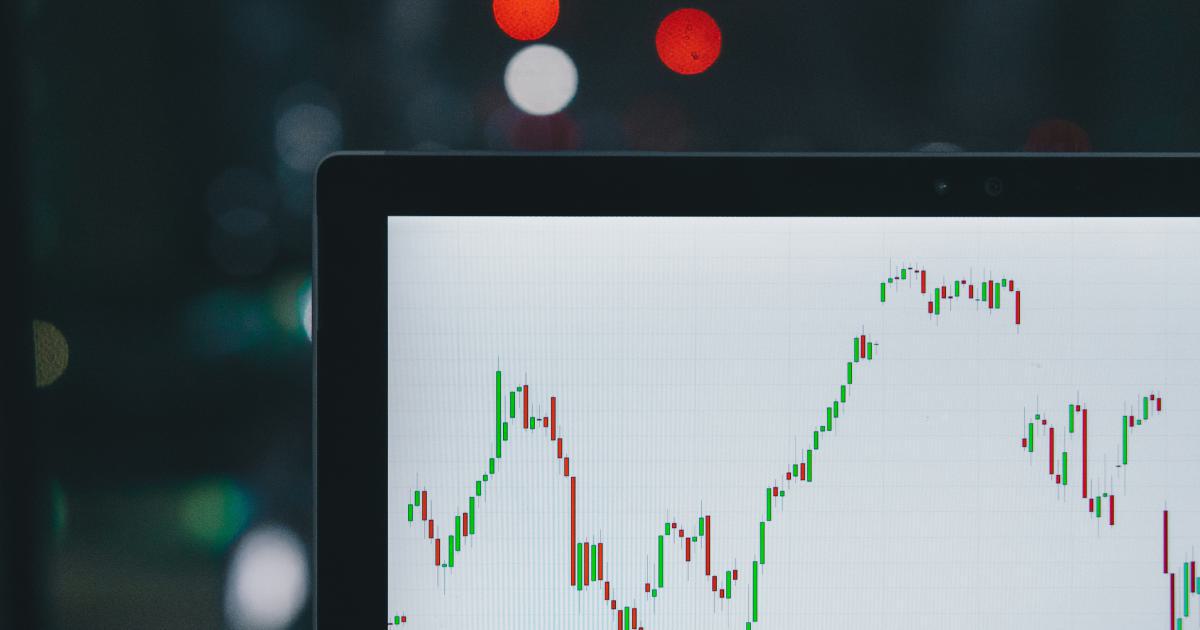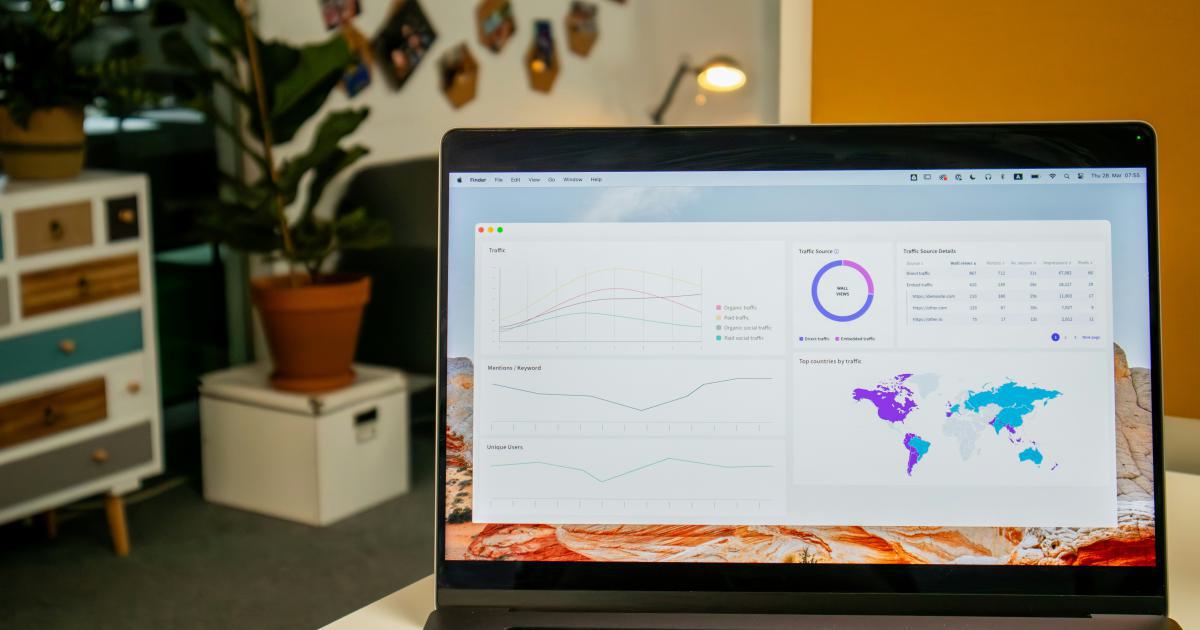Mastering Quantitative Momentum Trading Strategy Backtesting

Quantitative momentum trading strategy backtesting is a powerful tool that many traders and analysts rely on to validate and refine their trading models. By statistically testing a strategy using historical data, one can assess its performance under various market conditions. This comprehensive guide delves into the intricacies of momentum strategies, explores the art and science behind rigorous backtesting, and offers a step-by-step procedure for implementing robust testing frameworks. Whether you are a professional quantitative researcher or a retail trader curious about the potential of algorithmic trading, this article provides the critical insights and practical examples you need.
Understanding Quantitative Momentum Trading Strategy Backtesting
Quantitative momentum trading is based on the hypothesis that assets which have performed well in the past will continue to perform well in the near future, and vice versa for assets that have lagged. The backtesting phase further confirms or refines this view by simulating historical market conditions using a defined set of rules. In this section, we will describe the core concepts behind momentum trading and the role that backtesting plays in ensuring reliability.
Momentum trading strategies are grounded in behavioral finance and market theory. Many researchers have found that during periods of trending markets, investors' overreaction or underreaction can lead to sustained trends in asset prices. This creates an opportunity for systematic trading models to profit from these trends before the market corrects itself.
Key Components of Momentum Trading Strategies
Signal Generation:
Portfolio Construction:
Risk Management:
Performance Metrics:
Quantitative momentum trading strategy backtesting integrates these components into a rigorous simulation, providing critical insights into potential strategy performance under past market conditions.

The Importance of Robust Backtesting
Backtesting serves several key purposes in the development of trading strategies:
- It calculates how a strategy would have performed using historical data.
- It allows for the detection of data-mining biases and overfitting.
- It provides confidence that the chosen strategy can survive diverse market conditions.
Advantages of Quantitative Backtesting
Objective Validation:
Backtesting enables traders to objectively assess their strategies without risking capital in live markets. In many cases, the ability to simulate hundreds or thousands of trades translates to a more dependable view of the strategy’s potential performance.
Refinement and Optimization:
Ongoing adjustments and improvements to strategies can be guided by insights generated during backtesting. If the historical results are unsatisfactory, traders can revisit their model assumptions and optimize the parameters to capture more realistic data.
Risk and Performance Metrics:
Backtesting provides access to a detailed suite of performance metrics. Understanding the risk-adjusted returns helps in determining whether the strategy meets the required expectations. For example, a high annual return might be accompanied by a significant drawdown, which could indicate a poor risk-reward balance.
Limitations and Pitfalls in Backtesting
Survivorship Bias:
One of the most prevalent pitfalls in backtesting is survivorship bias. Many datasets might only include companies that have survived until today and exclude those that have gone bankrupt or been delisted. This bias can paint an overly optimistic picture of strategy performance.
Look-Ahead Bias:
Another challenge is look-ahead bias, which occurs when future data inadvertently influences past trade decisions in your backtesting process. This happens particularly when data is not properly aligned or if corporate actions like dividends and splits aren’t handled correctly.
Overfitting:
Overfitting a strategy to historical data can drastically diminish its future performance. When a strategy is too finely tuned to past data, it may fail to adapt to new market conditions. Ensuring that the model maintains robustness when applied to out-of-sample data is a critical challenge.
Best Practices for Avoiding Common Pitfalls
- Data Integrity:
- Out-of-Sample Testing:
- Simplicity is Key:
- Documentation and Replication:
Incorporating these best practices will enhance the reliability and credibility of your quantitative momentum trading strategy backtesting.

Setting Up a Backtesting Framework
Constructing an efficient backtesting framework requires a combination of robust data handling, coding practices, and careful interpretation of results. This section outlines the step-by-step process for developing a highly adaptable backtesting system.
Step 1: Data Collection and Preparation
The first vital step is gathering historical market data. This often involves multiple data sources including:
- Stock exchanges and market data providers.
- Economic calendars for macroeconomic events.
- Alternative datasets such as sentiment data or social media analysis.
Data cleaning is equally critical. Invalid or missing data points must be identified and corrected to avoid skewing the results. Techniques such as interpolation, normalization, or even complete removal of outliers are common practices.
Step 2: Defining the Trading Signal
In a momentum-based system, the trading signal is typically derived from price action. One simple method is to calculate a moving average over a set period:
- Define a look-back period (e.g., 60 days).
- Calculate the moving average for each day.
- Generate a buy signal when the asset’s price surpasses the moving average, and a sell signal when it drops below.
The key is to parameterize this signal generation such that changes in the look-back period or the threshold can be easily tested and compared.
Step 3: Portfolio Simulation and Rebalancing
After generating signals, simulate portfolio construction using the following processes:
- Asset Ranking: Rank assets based on momentum scores.
- Allocation: Allocate equal or weighted investment in each asset according to the ranking.
- Rebalancing: Define rebalancing intervals (e.g., monthly, quarterly) to adjust the portfolio composition, ensuring that the strategy remains aligned with current market conditions.
Step 4: Performance Measurement and Analytics
After running the simulation, several performance metrics should be calculated:
- Return on Investment (ROI): The total percentage return over the simulation period.
- Annualized Return: Normalizing the returns on an annual basis.
- Maximum Drawdown: The worst-case loss from a peak.
- Sharpe Ratio: A risk-adjusted measure of return.
Graphical representations such as equity curves, drawdown charts, and performance histograms can be highly informative. Visualization not only provides clarity but also helps identify any hidden anomalies in the strategy's performance.
Step 5: Iteration and Refinement
Once the initial backtest is complete, refine the strategy by adjusting parameters and incorporating additional market factors. This iterative process is critical to eliminate any overfitting and to ensure the strategy adapts well to diverse market environments.
Each step in the process contributes to a comprehensive backtesting system that provides actionable insights into the strategy’s viability.

Advanced Techniques in Backtesting Momentum Strategies
Beyond the basic steps, advanced traders add layers of sophistication to their backtesting frameworks. These advanced techniques help capture nuances in market behavior and further ground the model in real-world conditions.
Incorporating Transaction Costs
One critical aspect often overlooked in simplified backtests is transaction costs. In live trading, every trade incurs costs such as commissions, bid-ask spreads, and slippage. A rigorous backtest must account for these factors to mirror realistic returns.
Methods to Consider:
- Fixed Costs: A flat fee per trade.
- Percentage Costs: Trades may incur a percentage-based cost based on volume.
- Dynamic Slippage: Adjust costs dynamically based on trade size and current market liquidity.
Integrating transaction costs can dramatically affect the outcome. A strategy that appears profitable in a no-cost simulation might barely break even once realistic expenses are incorporated.
Position Sizing and Leverage
Proper position sizing is crucial in aligning strategy performance with risk tolerance. Leverage can amplify returns but also significantly increase losses. Backtesting models that simulate variable position sizes and the use of leverage provide a more balanced view of the risk/return profile.
Risk-Adjusted Position Sizing:
- Use the Kelly criterion or similar methods to determine optimal position sizes.
- Experiment with fixed versus dynamic position sizes to see which approach yields better risk-adjusted returns.
Stress Testing and Scenario Analysis
Market conditions can change drastically, sometimes without warning. Stress testing involves running the backtesting model under extreme market conditions to gauge its resilience. For example, one might simulate market crashes, rapid volatility spikes, or dramatic sector rotations.
Scenario Analysis Steps:
- Develop hypothetical scenarios based on historical “black swan” events.
- Modify the underlying assumptions of asset volatility, correlation, and liquidity.
- Evaluate how the strategy responds in these adverse conditions.
This aspect of backtesting ensures that a strategy not only performs well in normal market periods but can also withstand severe disruptions.
Machine Learning and Adaptive Algorithms
Recent advances in technology have enabled the integration of machine learning within backtesting frameworks. Techniques such as reinforcement learning can optimize strategy performance by continuously adapting to evolving market conditions.
Applications:
- Feature Selection: Automate the process of selecting predictive variables.
- Parameter Optimization: Identify non-linear interactions among various strategy parameters to maximize performance.
- Adaptive Strategies: Allow the strategy to learn and adjust its trading rules based on ongoing performance.
Machine learning adds a layer of complexity and can unlock previously hidden insights, provided the risk of overfitting is carefully managed.
Handling Data Anomalies and Real-Time Adjustments
In a live environment, data anomalies such as sudden market halts, unusual volume spikes, or data feed errors can disrupt a strategy. Building robustness into your backtesting framework involves simulating these real-world challenges.
Proactive Measures:
- Outlier Detection: Implement statistical methods to identify and manage outliers.
- Real-Time Adjustments: Incorporate fallback rules that trigger automatic adjustments if market conditions deviate from expected norms.
- Version Control: Maintain rigorous tracking of changes to the strategy, ensuring that adaptive algorithms do not diverge from intended behaviors.
Carefully managing these anomalies during the testing phase sets the stage for smoother transition to live trading.

Real-World Examples and Case Studies
Practical examples help illustrate the theoretical concepts discussed above. In this section, we review several case studies that demonstrate the successful application of quantitative momentum trading strategy backtesting.
Case Study 1: U.S. Equities Momentum Strategy
A group of researchers evaluated a momentum strategy on U.S. equities over a 20-year period. The process involved:
- Data Collection: Daily price data for the S&P 500 constituents.
- Signal Generation: A 12-month momentum indicator was applied, where each security's past performance determined its signal.
- Portfolio Construction: The top 20% of stocks based on momentum scores were selected and equally weighted.
- Risk Management: Stop-loss orders were implemented to cap potential losses at 10%.
Results:
The backtested results showed an annualized return of approximately 15%, with a Sharpe ratio of 1.2. However, the maximum drawdown reached 25% during market downturns. This demonstrated the strategy’s ability to capture significant upward trends, while also emphasizing the importance of risk management through stop-loss orders.
Case Study 2: Global Momentum Diversification
An international hedge fund applied a similar momentum strategy across multiple asset classes, including equities, bonds, and commodities. The objective was to diversify risk while capturing momentum across different markets.
Methodology:
- Multi-Asset Data: Collected historical data from major indices, commodity prices, and sovereign bonds.
- Signal Synthesis: Combined momentum signals from different asset classes to create a composite ranking.
- Dynamic Allocation: Adjusted asset weights based on real-time relative strength and market volatility.
Outcomes:
Backtesting revealed that the diversified momentum model offered lower volatility compared to a pure equity momentum strategy, with a Sharpe ratio improvement of nearly 0.5. In volatile market periods, the portfolio’s drawdown was significantly reduced, illustrating the benefits of multi-asset diversification.
Lessons Learned from the Case Studies
- Backtesting across different markets underscores the importance of incorporating transaction costs and liquidity constraints.
- Scenario analysis can reveal potential vulnerabilities before live deployment.
- A balanced approach combining stringent risk management and adaptive algorithms leads to a more resilient strategy.
Implementing and Automating the Backtesting Process
Automation is key for staying ahead in today’s fast-paced trading environments. Leveraging programming languages and specialized libraries can transform a manual backtesting process into a streamlined, automated workflow.
Tools and Programming Languages
Python:
Python has emerged as the leading language for quantitative trading due to its robust libraries such as Pandas, NumPy, SciPy, and visualizations libraries like Matplotlib and Seaborn. Moreover, backtesting libraries like Backtrader and Zipline make it easier to implement complex trading algorithms.
R:
R is another popular language among statisticians and quantitative analysts. With packages like quantmod, TTR, and PerformanceAnalytics, R provides excellent capabilities for time-series analysis and strategy evaluation.
Other Platforms:
Platforms like MATLAB, C++, and dedicated backtesting software (e.g., TradeStation, MetaTrader) are also widely used. The choice of tool often depends on the complexity of the strategy and the trader’s familiarity with the programming environment.
Building a Custom Backtesting Engine
For those who wish to build a custom engine, consider the following steps:
Framework Setup:
Data Handling:
- Importing data from CSV files, databases, or live APIs.
- Cleaning and preprocessing data, including handling missing values and splitting datasets into in-sample and out-of-sample segments.
Simulation Engine:
Testing and Debugging:
User Interface and Reporting:
Automation Benefits
Automating the backtesting process offers several benefits:
- Speed: Rapidly adjust and test multiple strategies simultaneously.
- Scalability: Easily integrate additional data sources or expand to multi-asset classes without significant rework.
- Consistency: Ensure consistent application of risk measures and transaction logic across all tested strategies.
Through careful automation and leveraging modern programming tools, quantitative momentum trading strategy backtesting can become not only more efficient but also more reliable in reflecting true market conditions.
Conclusions and Future Perspectives
Quantitative momentum trading strategy backtesting remains a cornerstone in the development of effective trading strategies. By combining rigorous data analysis, careful signal generation, and robust risk management, traders can build models that stand the test of time. As financial markets become increasingly data-driven, the sophistication of backtesting methods will continue to evolve.
Final Thoughts
- Continuous Improvement:
- Integration of New Technologies:
- Holistic Risk Management:
- Transparency and Replicability:
By meticulously developing, testing, and refining your trading strategy, you can build a resilient system that stands up to the myriad challenges of live markets. The combination of solid quantitative methods with continuous adaptation is what sets apart truly successful trading systems.
In summary, mastering quantitative momentum trading strategy backtesting requires a blend of statistical rigor, disciplined methodology, and a readiness to embrace new technologies while continuously learning from past performance. With proper execution and commitment, this process unlocks valuable insights that can drive long-term trading success.
Unleash the Power of Automated Trading Analysis
Are you struggling to keep up with the fast-paced trading world? TrendSpider empowers you with cutting-edge tools for optimal strategy execution.
Our automated technical analysis suite eliminates guesswork, backtests strategies, and delivers real-time alerts, saving you valuable time and effort.
Ludovik Beauchamp
49 posts written





